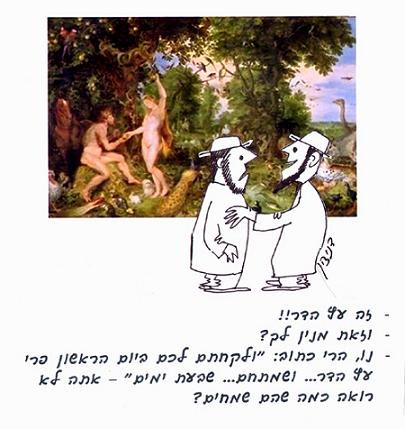
On the holiday of Sukkot the Jew is asked to rejoice with the fruit of a beautiful tree, for it is written “And you shall take for yourselves on the first day the fruit of beautiful trees…and you shall rejoice…for seven days” (Leviticus 23:40). What is the fruit of a beautiful tree? The sages ruled that it is an etrog! How did they know that the Scriptures meant an etrog when writing “the fruit of a beautiful tree”? The sages explained the words pri etz as meaning a type of tree in which the taste of the trunk and the taste of the fruit are the same. The etrog tree does indeed have a trunk whose flavor is like the fruits’. The scholars asked: Maybe the Scriptures meant the pepper tree? This is also a type of tree whose trunk tastes like its fruits. Answer: Since the peppercorn is small and one who takes a single peppercorn would find it gets hidden by his hand, it is reasonable to suppose that the Scriptures referred to an etrog, which is a large and noticeable fruit. Rabbi Judah the Nasi gives a different explanation. The word hadar can be converted and read hadir, from the same root as dir, a sheep shed. Just as in a sheep shed there are large and small sheep and lambs, those which are whole and those which have some deformation, so, too, the fruit of the hadar must include large and small fruit, whole and damaged fruit. The etrog tree answers to this requirement. The scholars asked: Do not many trees have both large and small fruits, whole and damaged? If so, why was the etrog specifically called for? Answer: Rabbi Judah the Nasi meant that just as in the sheep shed there are small lambs which are born while the older sheep yet live, so are we required to take a fruit from a tree on which the older fruit remains while new fruit and blossoms are being produced. This requirement is met by the etrog. Another sage, R’ Avihu, gave a different explanation: The word hadar comes from the same root as mehudar which can be converted into the roots of dar and gar (to reside). The fruit of the etrog lives on the tree; it does not fall off for over a year. A different sage, Ben Azai, gave yet another explanation: The word hadar comes from the same root as idor, which in Greek is hydro [water]. The etrog grows when given a great deal of water.
(Babylonian Talmud, Tractate Sukkah 35a)
